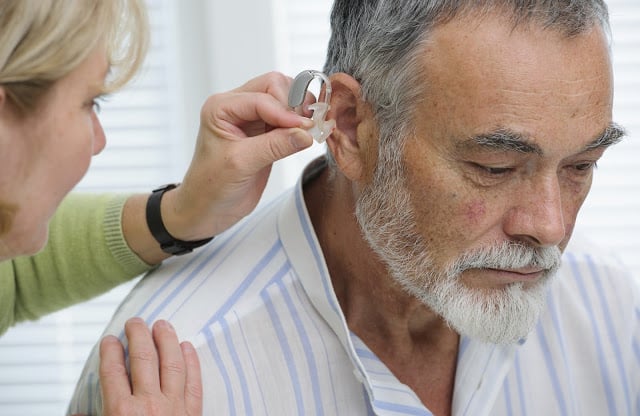If you are experiencing hearing loss caused by disease, aging, or long-term exposure to loud noise, you might benefit from a hearing aid. A hearing aid helps people with hearing loss listen, communicate, and participate more fully in everyday life.

Have your hearing loss evaluated by a doctor to make sure you're getting the right type of hearing aid and to have it fitted properly. While a prescription is not required for most hearing aids, it can be hard to know which one is best for your needs.
How does a hearing aid work?
A hearing aid is a small electronic device that you wear in or behind your ear. A hearing aid has three basic parts: a microphone, amplifier, and speaker. The hearing aid receives sound through a microphone, which converts the sound waves to electrical signals and sends them to an amplifier. The amplifier increases the power of the signals and then sends them to the ear through a speaker.
Different styles of hearing aids
Hearing aids use different types of electronics to convert sound waves for your ear. An audiologist has different programming capabilities with digital vs analog circuitry and may recommend one over the other for your specific situation. There are also different styles of hearing aids to help with different levels of hearing loss.
Most common types of hearing aids
- Completely in the canal (CIC): A completely in the canal hearing aid is the smallest hearing aid available and is molded to fit inside your ear. It works well for mild to moderate hearing loss in adults.
- In the canal (ITC): Another hearing aid designed to fit inside a person's ear canal. This one has a few more features than the smaller CIC version. These are best for mild to moderate hearing loss in adults.
- In-the-ear (ITE): These hearing aids are designed to fit inside the bowl-shaped outer ear - either completely or as a half shell model. ITE models are easier to handle and include volume control options. They work well for adults with mild to severe hearing loss.
- Behind-the-ear (BTE): These hearing aids have a hard plastic care worn behind the ear connected to a piece that fits inside the outer ear. Behind-the-ear hearing aids work well for people of all ages and help with any type of hearing loss.
Learn more about hearing aids form the National Institute of Health >>
The importance of being fitted for a hearing aid
It is important to have your hearing professionally evaluated by your doctor who will likely refer you to an otolaryngologist - a physician who specializes in the ear, nose, and throat. At Logansport Memorial Hospital, our ENT physician works closely with our trainer audiologist to help with a wide variety of hearing loss situations. Our audiologist is based in the office and works with your physician to evaluate, diagnose, and treat symptoms of hearing problems.


